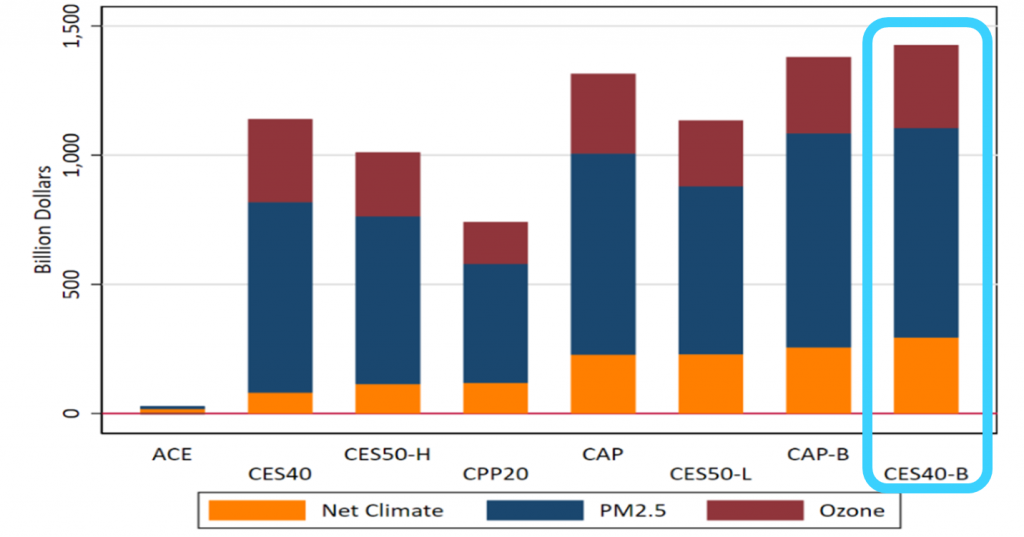We established the Clean Energy Futures (CEF) project to examine the costs and benefits of alternative policies to decrease carbon dioxide emissions from the electricity sector. The CEF project is a multi-institutional research initiative with experts from Syracuse University Resources for the Futures; and Georgia Institute of Technology.
The CEF team analyzed 12 leading policy approaches to reducing carbon dioxide emissions from the electricity sector, including: (1) recent rules promulgated by the U.S. Environmental Protection Agency (EPA), (2) clean electricity standards, (3) national cap and trade policies, and (4) carbon prices in the electricity sector. Each electricity sector policy is compared to a no-policy reference case (business as usual) to estimate changes in: (1) carbon dioxide emissions; (2) electricity system generation sources and system costs; (3) co-pollutant emissions of sulfur dioxide, nitrogen oxides, and mercury emissions; (4) air quality; and (5) air quality-related human and ecosystem health outcomes.
From this work we have learned:
- All policies considered produce net benefits. Total monetized benefits exceed policy costs by $300 to 640 billion for 2020-2050, and climate benefits alone outweigh policy costs.
- Many policy pathways exist for achieving low or zero carbon emissions in the electricity sector and costs are modest (~15% above baseline costs).
- Moderate ambition policies achieve 75% of the carbon emissions reductions of high ambition policies at ~9% above baseline costs (attaining zero emissions only adds 6%).
- Policy design is important to cost, timing of emissions reductions, local air quality, and health outcomes.

We published the first of what will be several papers on this work on the air quality projections associated with decarbonization policies (Vasilakos et al. 2022).
References:
Vasilakos. P., H. Shen, Q. Mehdi, P. Wilcoxen, C. T. Driscoll, K. F. Lambert, D. Burtraw, M. Domeshek, A. G. Russell. 2022. US clean energy futures – air quality benefits of zero carbon energy policies. Atmosphere, 13(9):1401- 1411. doi:10.3390/atmos13091401.